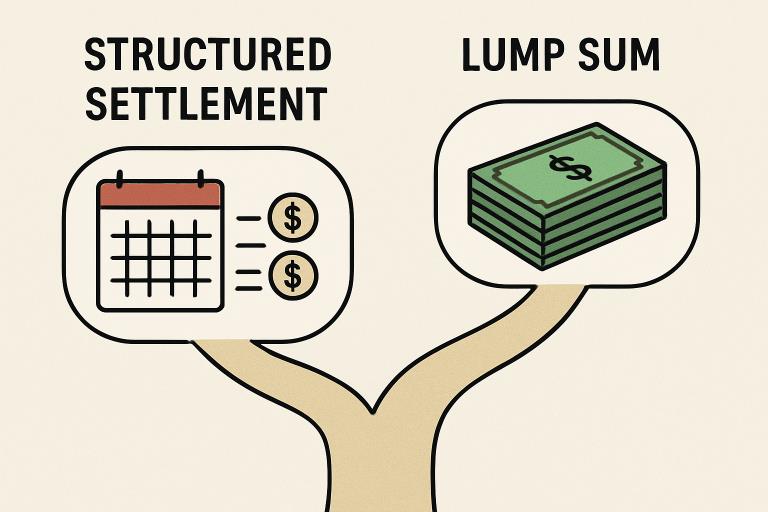Now Reading: Crafting a Settlement Plan that Drives Success: A Comprehensive Guide
-
01
Crafting a Settlement Plan that Drives Success: A Comprehensive Guide
Crafting a Settlement Plan that Drives Success: A Comprehensive Guide

Key Takeaways
- A Settlement Plan is essential for securing long-term financial stability after a legal settlement.
- Every plan should be tailored to individual needs, involving stakeholders and professionals.
- Choosing between a structured settlement and a lump sum depends on personal circumstances.
- Ongoing reviews and adjustments are critical for sustained success.
Building the Foundation: What Is a Settlement Plan?
A settlement plan is a structured approach to managing the financial proceeds received as a result of a legal settlement. Whether you’re navigating a personal injury award, workers’ compensation, or other legal resolutions, a Settlement Plan is designed to create lasting stability and clarity for beneficiaries. These plans ensure that funds are preserved, distributed, and protected in accordance with both immediate and long-term needs.
Sound planning benefits all parties involved — not just the recipient, but also their families, caretakers, and professional advisors. Thoughtful preparation can maximize the impact of the award, reduce stress associated with managing finances, and help avoid pitfalls such as overspending or unfavorable tax consequences.
Planning is particularly significant following court cases where large amounts of money are awarded. Recipients may suddenly face complex financial decisions, often while recovering emotionally or physically. Developing a robust settlement plan brings both structure and security, safeguarding current and future interests.
Having a Settlement Plan also protects recipients against the common risks of asset dissipation, financial exploitation, or legal noncompliance. By defining roles, responsibilities, and desired outcomes upfront, the groundwork is set for long-term financial well-being.
Key Components of an Effective Settlement Strategy
- Clear Objectives and Financial Goals:Begin with a thorough understanding of your necessities and aspirations, including income replacement, education funding, or paying for long-term care. Crafting measurable goals forms the backbone of an actionable plan.
- Stakeholder Involvement and Communication:Engaging all relevant parties — from family members to financial and legal advisors — encourages diverse perspectives and reduces the likelihood of conflicts later.
- Short and Long-Term Needs:A quality settlement plan considers short-term cash flow for immediate expenses and long-term strategies for ongoing security and growth, including inflation protection and investment options.
Assessing Your Options: Structured Settlement vs. Lump Sum
Comparing Payment Forms
When a settlement is finalized, recipients are often presented with two main options: structured settlements (periodic payments) or lump sum payments. For instance, a structured settlement might allocate monthly payments over 20 years, ideal for meeting recurring costs or providing a steady income. Conversely, a lump sum delivers the full payout at once, offering flexibility for major one-time expenses or investment opportunities.
Key Factors to Consider
- Financial Literacy:Lump sums require careful budgeting and investment oversight, while structured settlements offer built-in discipline and predictability.
- Age and Health:Individuals with special medical needs or limited life expectancy may need more immediate liquidity.
- Legal Requirements:Certain cases—such as those involving minors or specific court rules—may mandate a particular payment arrangement.
Legal Considerations and Compliance Essentials
Settlement plans are governed by an evolving framework of state and federal regulations. IRS guidelines influence taxability, while various statutes define how funds must be managed and distributed. Legal professionals play a crucial role by drafting clear documents, verifying compliance, and maintaining accurate records.
It’s imperative to seek guidance from attorneys or specialized financial advisors familiar with structured settlements and trust management. Their expertise reduces the likelihood of avoidable errors and ensures legal protection for all parties.
Financial Security and Risk Management
Asset protection is a principal aim of any settlement plan. Incorporating mechanisms such as insurance policies, annuities, or third-party-managed trusts can insulate funds from unexpected claims, creditors, or mismanagement. For those concerned about safeguarding assets, the use of irrevocable trusts or special needs trusts can be an effective solution, lending both legal and financial advantages.
Risk management also involves regular assessments to identify new vulnerabilities. Prudent diversification, liability insurance, and professional oversight all contribute to preserving value over time.
The importance of structuring your plan around future needs cannot be overstated; life changes such as remarriage, disability, or market volatility may require that the original settlement structure be modified for continued effectiveness.
Approaches to Communication and Family Involvement
Transparency and inclusion are key when making settlement decisions with lasting implications. Best practices include sharing essential information with stakeholders and facilitating open discussions about expectations and responsibilities. Bringing loved ones into the planning process ensures that all perspectives are considered, and any future disputes or confusion are minimized.
Consider appointing a trusted advocate or financial liaison for beneficiaries who may lack the skills or independence to manage their own assets. This collaboration builds trust and develops a shared understanding of the plan’s objectives.
Reviewing, Adjusting, and Maintaining Your Settlement Plan
Even the most carefully constructed settlement plan requires ongoing management. Scheduling annual reviews with professionals ensures that your plan remains relevant and can respond to changes in personal circumstances, market conditions, or legislation. Triggers for revision might include a significant health event, a shift in investment returns, or the birth of a dependent.
Reliable guidance from professional associations provides valuable frameworks for best practices, compliance, and conflict resolution, keeping your settlement plan robust over time.
Conclusion: Takeaways for Achieving Success through Thoughtful Settlement Planning
- Start with clear, personalized goals and involve trusted professionals and family to ensure a holistic approach.
- Understand the benefits and drawbacks of structured versus lump sum payouts and select what best fits your unique circumstances and future plans.
- Stay vigilant on legal compliance and asset protection, utilizing resources from established institutions and legal bodies for the latest guidance.
- Commit to ongoing reviews and transparent communication to adapt your plan as life evolves.
By taking intentional, informed steps, recipients of legal settlements can transform an uncertain future into an opportunity for lasting security and success. For more detailed advice and support, consult credible resources or connect with a dedicated settlement planning professional.





















